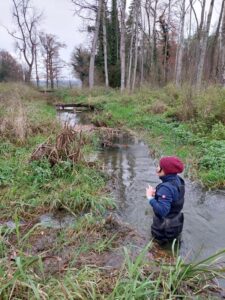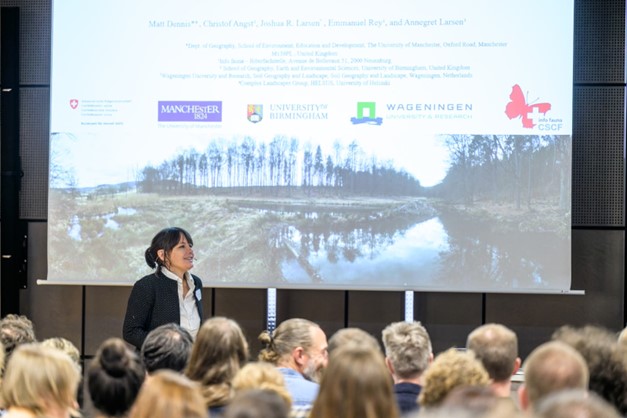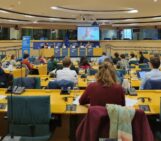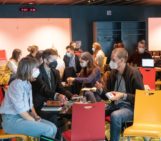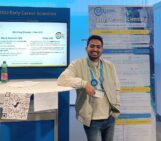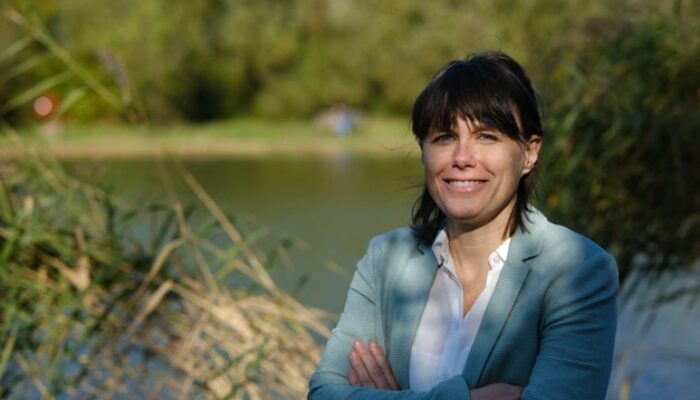
Annegret, welcome to GeoTalk! You’re a researcher who focuses on abiotic-biotic environmental interactions. Can you tell us how the implications of your research extend to sustainable management practices?
The United Nations, European Union, and national governments require us to restore landscapes to a ‘natural’ state. However, European landscapes have been shaped by human activity for thousands of years, leaving us with little to no clear understanding of what nature truly is. Furthermore, human-dominated landscapes are often governed by physical processes rather than biotic-driven ones. Over time, this has eroded our understanding of the feedback mechanisms between abiotic and biotic components in natural landscape systems.
My research focuses on uncovering how these feedbacks operate in natural environments, their impacts, and how they can be recreated to support restoration efforts. Additionally, I aim to understand how pre-human landscapes functioned and appeared. These natural systems can also be described as “wild,” which is why I find the concept of rewilding in conservation particularly compelling.
Can you tell us a bit about your projects that will provide data to manage ecosystems more sustainably?
At the Wageningen University, the topic of nature-based solutions is all around you, the setting is perfect to do research on new approaches towards a more resilient ecosystem management. Our Soil Geography and Landscape Department is leading several projects on how nature-based solutions can be included in management of landscapes.
More specifically, we just finished a project funded by the Swiss Federal Organization for the Environment (FOEN) during which we produced a spatial model on beaver ecosystem services, using existing data and citizen science. The model’s results were incorporated into the Swiss Government’s spatial platform, influencing national riparian corridor management nation-wide. The objective is to optimise beaver site management, allowing beavers to inhabit areas where they offer vital ecosystem services like water purification or drought resilience, while relocating them from areas where they clash with infrastructure or agricultural needs. We also investigated if, how much, and under which circumstances beaver dams can lead to water purification and soil carbon sequestration.
The European Union’s Nature Restoration Law aims to restore 25,000 kilometres of rivers to a natural state within the next decade. However, centuries of human impact have altered Europe’s rivers to such an extent that many restoration projects rely on arbitrary targets, lacking crucial information about what constitutes a naturally functioning river system. These efforts often overlook the feedback between physical and biotic processes that are essential for sustainable restoration.
I am about to start a new project that focuses on addressing this gap by advancing our understanding of these interactions and establishing a robust baseline for effective river restoration. Exciting new genetic methods are emerging as valuable tools, offering innovative ways to unravel the complexities of past river ecosystems and support more informed restoration strategies!
In what ways do you engage with non-academic stakeholders and how does this engagement increase the value of your research and its outcomes?
I didn’t consciously reflect on stakeholder engagement during my first transdisciplinary project—it simply unfolded naturally and felt intuitive. In hindsight, the project was a true eye-opener that very much influenced my path. When transdisciplinary projects are well-executed, they can make a meaningful impact, are great fun, and enrich everyone involved. However, I have to say that these projects are very time consuming and need a lot of coordination and communication.
Why do you think it’s important for scientists to engage with practitioners? What advice would you give to scientists looking to engage with practitioners or those outside of academia?
Identifying the right primary stakeholder is often underestimated, yet it is a critical step that requires significant time and effort.
It can feel like searching for a needle in a haystack. Success probably comes from a combination of actively engaging with others, clearly communicating your ideas, attending the right meetings, and building a strong network. Luck may play a role, and relocating internationally can disrupt existing connections, making the process even more challenging.
Once you identify the right stakeholder(s), it’s essential to collaboratively develop the questions and priorities from different perspectives. If you can form a real team, applied research becomes mutually beneficial, highly enjoyable, and often reveals insights that can be truly transformative in many ways.
What motivated you to join the EGU’s Biodiversity Task Force?
Biodiversity is defined by both species abundance and diversity, which form the foundation of most conservation efforts. As a river scientist, I have always struggled with conservation strategies that prioritise a single species at the expense of natural dynamics. I’ve often felt that the overall decline in biodiversity is partly due to ineffective conservation practices. It’s also important to recognise that conservation is a business, and I have observed how this influences the selection of conservation measures.
The Biodiversity Task Force was established to engage with the new Nature Restoration Law, which I hoped would challenge some of the more questionable conservation approaches and create new opportunities for improvement. This motivation is what led me to join the task force in the first place.
What aspect of your involvement in the Biodiversity Task Force do you find most enjoyable or rewarding?
Besides having a lot of fun working with the colourful mix of task force members, my biggest learning curve was understanding just how complex and different the policy world is, and it was fascinating to get an inside look!
On one hand, I realised that creating pathways for science to influence policy is not only worthwhile but absolutely essential. On the other hand, I was impressed to find policy documents that were fully up to date with the latest scientific research—some of which ultimately shaped the Nature Restoration Law.
I also had the opportunity to meet exceptionally smart individuals working in policy, and in combination this reassured me that published research is being read and genuinely contributes to science-based policy decisions.
My brief experience in the policy world made it clear to me that most policymakers (or better: their team) recognise and value high-quality science. This reinforces the importance of publishing well-developed, scientifically sound research—prioritising quality over quantity of publication. By doing this, it also enhances the likelihood of making an impact beyond the scientific community.

